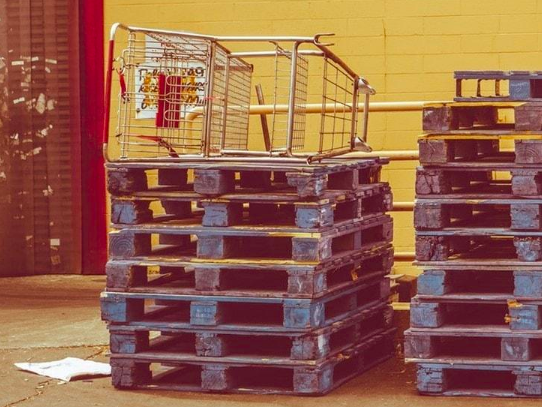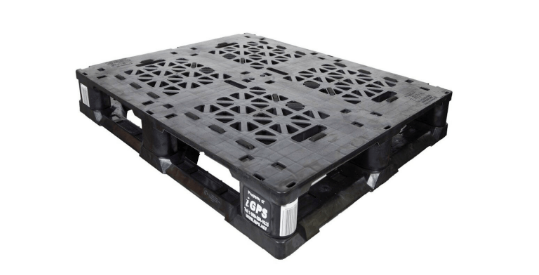Of all the products that move through our supply chains, pharmaceuticals are some of the most sensitive and expensive. Vaccines and other injectables need temperature-sensitive environments to remain safe and effective, and even the tiniest sign of damage to a pharmaceutical’s bottle or blister pack means a loss of product. Damage caused by mishandling or inattentiveness on the part of workers isn’t just financially costly, it can cost lives if it isn’t detected and corrected. The value of medicine is also a constant temptation to thieves and counterfeiters looking to make a quick buck.
These logistics challenges in the pharmaceutical industry are ones that warehouse and operations managers must overcome every day, often armed only with carefully kept records and constant vigilance. Unfortunately, even the most hawk-eyed manager can’t see or anticipate everything, as the 2010 Tylenol recall over contamination introduced via wood pallets demonstrates. That’s why the best way to overcome logistics challenges is by limiting the opportunities they have to arise. Automated Storage and Retrieval Systems (ASRS) provide one means of doing this by reducing the need for human handling. Another way to circumvent logistics issues is to switch to easy-to-clean, reliable plastic pallets. Changing the shipping platform you use to move pharmaceuticals has an effect that ripples throughout the entire supply chain, removing some issues entirely and making others easier to deal with. In today’s post, we’ll explain how.
Preventing Contamination in the Pharmaceutical Supply Chain
The recall of Tylenol is well known in the pharmaceutical business and to the general public. The years-long saga started in 2009 and blighted the reputation of Johnson & Johnson, which had previously been admired for its transparent and responsible reaction to the cyanide poisoning of Tylenol in 1982. The more recent incident, however, illustrates how vulnerable medication is to contamination and how contaminants can destroy decades of carefully built trust in a brand. It also shows how wood pallets can introduce a level of uncertainty and uncontrollability into the pharma supply chain.
Wood pallets may start off sanitary due to heat treatment, but, exposed to moisture like condensation from a cooled environment, they can very quickly become breeding grounds for bacteria.
The culprit is wood’s absorbent nature, which means that wood pallets will absorb any liquids they’re exposed to. Plastic pallets, on the other hand, are non-absorbent, resisting penetration by both chemicals and water. They are also biologically non-reactive, meaning that if they are exposed to moisture they won’t become a breeding ground for microbes like fungi and bacteria. This last point is important for the pharmaceutical industry. Wood pallets may start off sanitary due to heat treatment, but, exposed to moisture like condensation from a cooled environment, they can very quickly become breeding grounds for bacteria like salmonella and Listeria. Plastic pallets, on the other hand, can easily be sanitized using a non-toxic chemical that will not leave a residue that could adulterate the product. By lowering the chances of contamination, the simple solution of plastic pallets is able to make a big difference in solving a major logistical challenge.
Preventing Product Damage During Storage and Transportation

Logistics wouldn’t pose a challenge if it didn’t involve movement. The constant flow of product through a supply chain is what creates challenges for logistics and operations managers. To keep pharmaceuticals moving from place to place and to keep them undamaged in the process requires a safe, reliable shipping platform.
A rough or uneven wood pallet surface can cause damage to a product by puncturing packaging.
Unfortunately, the typical wood pallet is not able to provide this safety and strength. A rough or uneven wood pallet surface can cause damage to a product by puncturing packaging, and the complete failure of a wood pallet, in which the deck separates from the base, can destroy a whole load of pharmaceuticals and delay the entire supply chain. Product damage from incidents like this is relatively common with wood pallets.
In comparison, plastic pallets are considerably more robust. The maximum dynamic load of a plastic pallet is 5,000 pounds compared to the 2,800 pounds a wood pallet can support. The plastic pallet’s greater strength allows it to stand up to the forces placed on it by heavy loads of product and heavy equipment. Even if a plastic pallet is damaged, it will not result in rotting or contaminated debris that would create yet another issue for pharma industry workers.
Using ASRS to Solve Logistics Challenges in the Pharmaceutical Supply Chain
If you manage logistics in a pharma supply chain you know that one of the biggest challenges is the reliance on human labor, which exposes pharmaceuticals to the possibility of theft. Keeping direct human contact with pharmaceutical products to a minimum with an ASRS reduces the chances of theft and deliberate adulteration and helps prevent human error during handling.
Automated systems aren’t programmed to deal with all the different ways wood pallets can break.
Once a warehouse installs an ASRS, though, other issues arise. Even reusable wood block pallets are ultimately fragile in the face of industrial machinery and are prone to breaking, which can damage product as well as equipment with loose nails and splinters. Automated systems aren’t programmed to deal with all the different ways wood pallets can break. In fact, a single incident may keep spreading as the ASRS continues trying to move the product, potentially spreading contaminants and loose material through storage areas. Since biologics like human plasma are a part of the pharmaceutical industry, this can very quickly become a biohazard scenario.
A plastic pallet, on the other hand, is far more durable than its wood block equivalent and is able to make 80 to 120 trips through the supply chain. In comparison, a reusable wood block pallet will make only 15 to 20 trips. Plastic pallets are robust enough to deal easily with the forces of an ASRS, and their light weight makes them easier on the system’s machinery, too.
Plastic Pallet Pooling Overcomes Logistics Challenges in the Pharmaceutical Industry

Finally, one of the biggest logistic challenges in the pharmaceutical industry is managing pallets. Discarding damaged pallets can create a large disposal bill and creates a constant expense in the form of buying new pallets. Reusing pallets, on the other hand, saves on disposal costs, but creates what is effectively a reverse, parallel supply chain to repair pallets and transport them where they are needed.
A solution to this problem that eliminates a major logistical headache for pharma companies is a pallet pooling program, in which another business delivers, maintains, removes, and sanitizes pallets. While many pallet pooling programs offer only wooden block pallets, with serious disadvantages for the integrity and safety of the pharmaceutical supply chain, there are plastic pallet pooling programs available that offer high-quality, durable plastic pallets that won’t break, absorb contaminants, or damage product.
The iGPS plastic pallet pooling program provides plastic platforms that meet the highest standard of hygiene and safety in order to solve the pharmaceutical industry’s supply chain challenges. Give our team a call at 1-800-884-0225, email a specialist at switch@igps.net, or visit our contact page.
Image 1: Flickr CC user Ben Harvey
Image 2: Unsplash user Jordan Koons



